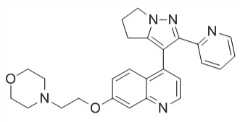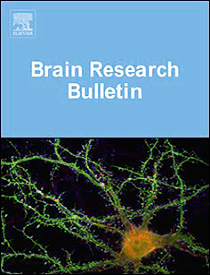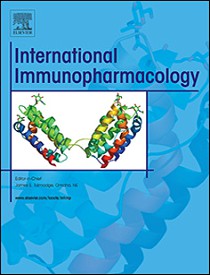All AbMole products are for research use only, cannot be used for human consumption.

LY2109761 is a Transforming Growth Factor β (TGF-β) type I /II receptor (TβRI/TβRII) kinase inhibitor with Ki of 38 nM and 300 nM, respectively. LY2109761 significantly inhibited the L3.6pl/GLT soft agar growth, suppressed both basal and TGF-beta1-induced cell migration and invasion, and induced anoikis. LY2109761 reduced clonogenicity and increased radiosensitivity in GBM cell lines and cancer stem-like cells, augmenting the tumor growth delay produced by fractionated radiotherapy in a supra-additive manner in vivo. In addition, LY2109761 had antimigratory and antiangiogenic effects in Matrigel migration and tube formation assays. LY2109761 also reduced tumor blood perfusion as quantified by noninvasive dynamic contrast-enhanced magnetic resonance imaging. In an orthotopic intracranial model, LY2109761 significantly reduced tumor growth, prolonged survival, and extended the prolongation of survival induced by radiation treatment. In vivo, in human xenograft tumors growing subcutaneously on BALB/c nu/nu mice, LY2109761 delayed tumor growth alone and in combination with fractionated radiation and TMZ.

Poult Sci. 2024 Sep;104278.
Growth Differentiation Factor 9 Activates the TGF-β Pathway in Follicle Atresia of Muscovy Ducks
LY2109761 purchased from AbMole

Poult Sci. 2024 Sep 12.
Growth differentiation factor 9 activates the TGF-β pathway in follicle atresia of Muscovy ducks
LY2109761 purchased from AbMole


Patent. US2024240141A1 2024 Jul 18.
Patent. US2024240141A1
LY2109761 purchased from AbMole

Patent. US2024252687A1 2024 Aug 01.
Patent. US2024252687A1
LY2109761 purchased from AbMole

Neoplasia. 2023 Feb;36:100872.
Subclonal evolution and expansion of spatially distinct THY1-positive cells is associated with recurrence in glioblastoma
LY2109761 purchased from AbMole

Mol Biotechnol. 2023 Oct 31.
MAP3K19 Promotes the Progression of Tuberculosis-Induced Pulmonary Fibrosis Through Activation of the TGF-β/Smad2 Signaling Pathway
LY2109761 purchased from AbMole

Toxicology. 2022 Oct;480:153338.
Polystyrene nanoplastics exacerbate lipopolysaccharide-induced myocardial fibrosis and autophagy in mice via ROS/TGF-β1/Smad
LY2109761 purchased from AbMole

Molecules. 2021 Apr 13;26(8):2231.
F4/80 + Kupffer Cell-Derived Oncostatin M Sustains the Progression Phase of Liver Regeneration through Inhibition of TGF-β2 Pathway
LY2109761 purchased from AbMole

Brain Res Bull. 2020 May 8;161:21-32.
TGFβ1 Alleviates Axonal Injury by Regulating Microglia/Macrophages Alternative Activation in Traumatic Brain Injury
LY2109761 purchased from AbMole

Int Immunopharmacol. 2018 Dec 17;67:287-293.
Effect of recombinant human thrombopoietin on immune thrombocytopenia in pregnancy in a murine model.
LY2109761 purchased from AbMole
| Cell Experiment | |
|---|---|
| Cell lines | Colo357FG/GLT and Colo357L3.6pl/GLT cells |
| Preparation method | LY2109761 was dissolved in 100% DMSO at a stock concentration of 10 mmol/L. The concentration of DMSO did not exceed 0.1% in any assay. FG/GLT nonmetastatic pancreatic carcinoma cells (A) and their highly metastatic subclone L3.6pl/GLT pancreatic carcinoma cells were seeded at a density of 1.0 × 103 per well. On the following day, the cells were treated with increasing doses of LY2109761 (0.1, 1, and 10 μmol/L), gemcitabine (0.3, 3,and 30 nmol/L), and their combinations. On day 2, the medium containing drugs was removed, the cells were washed twice with PBS, and fresh medium was added. After 5 d of incubation, the 3-(4,5 dimethylthiazol-2-yl)-2,5-diphenyltetrazolium bromide assay was used to obtain relative variable cell numbers. DMSO-treated cells were assigned a value of 100%. Means and 95% confidence intervals of three independent experiments performed in triplicate. |
| Concentrations | 0, 2, 20 µ M |
| Incubation time | 5 days |
| Animal Experiment | |
|---|---|
| Animal models | Human Pancreatic Carcinoma Tumors Growing in the Pancreas of Athymic Nude Mice |
| Formulation | dissolved in the SX-1292 oral vehicle (1% sodium carboxymethylcellulose, 0.5% sodium lauryl sulfate, and 0.05% antifoam; Eli Lilly) |
| Dosages | LY2109761 (50 mg/kg) twice a day p.o. (days 1–5 of each week) |
| Administration | p.o. |
| Molecular Weight | 441.52 |
| Formula | C26H27N5O2 |
| CAS Number | 700874-71-1 |
| Solubility (25°C) | DMSO 6 mg/mL |
| Storage |
Powder -20°C 3 years ; 4°C 2 years In solvent -80°C 6 months ; -20°C 1 month |
| Related TGF-β Receptor Products |
|---|
| CJJ300
CJJ300 is a transforming growth factor-β (TGF-β) inhibitor with an IC50 of 5.3 µM. |
| AZ12601011
AZ12601011 is an orally active, selective TGFBR1 kinase inhibitor with an IC50 of 18 nM and a Kd of 2.9 nM. AZ12601011 inhibits phosphorylation of SMAD2 via selectively inhibiting ALK4, TGFBR1, and ALK7. AZ12601011 inhibits mammary tumor growth. |
| TGF-βRI inhibitor 1
TGF-βRI inhibitor 1 (compoimd i) is a TGF-βRI inhibitor. |
| TGF-βRI inhibitor 1 methylbenzenesulfonate
TGF-βRI inhibitor 1 (compoimd i) methylbenzenesulfonate is a TGF-βRI inhibitor. |
| LSKL TFA
LSKL TFA is a latency-associated protein (LAP)-TGFβ derived tetrapeptide and a competitive TGF-β1 antagonist. |
All AbMole products are for research use only, cannot be used for human consumption or veterinary use. We do not provide products or services to individuals. Please comply with the intended use and do not use AbMole products for any other purpose.


Products are for research use only. Not for human use. We do not sell to patients.
© Copyright 2010-2024 AbMole BioScience. All Rights Reserved.
